Dizziness In Orthopaedic Physical Therapy Practice: History And Physical Examination
ADVERTISEMENT
Dizziness in Orthopaedic Physical Therapy Practice: History and
Physical Examination
Paul Vidal, PT, MHSc, DPT, OCS, MTC
Peter Huijbregts, PT, MSc, MHSc, DPT, OCS, MTC, FAAOMPT, FCAMT
Abstract: Physical therapy (PT) differential diagnosis of patients complaining of dizziness
centers on distinguishing those patients who might benefit from sole management by the
physical therapist from those patients who require referral for medical-surgical differential
diagnosis and (co) management. There is emerging evidence that PT management may suffice
for patients with benign paroxysmal positional vertigo, cervicogenic dizziness, and muscu-
loskeletal impairments leading to dysequilibrium. This article provides information on the
history taking and physical examination relevant to patients with a main complaint of diz-
ziness. The intention of the article is to enable the therapist to distinguish between patients
complaining of dizziness due to these three conditions amenable to sole PT management
and those patients who likely require referral. Where available, we have provided data on
reliability and validity of the history items and physical tests described to help the clinician
establish a level of research-based confidence with which to interpret history and physical
examination findings. The decision to refer the patient for a medical-surgical evaluation is
based on our findings, the interpretation of such findings in light of data on reliability and
validity of history items and physical tests, an analysis of the risk of harm to the patient,
and the response to seemingly appropriate intervention.
Key Words: Dizziness, History, Physical Examination, Physical Therapy
T
o facilitate differential diagnosis and screening of
symptoms in patients with benign paroxysmal positional
patients with a complaint of dizziness, we discussed
vertigo (BPPV) involving the posterior, horizontal, and
in an earlier article
a diagnostic classification system
anterior semicircular canals
. Manual therapy inter-
1
2-6
based on symptomatology and pathophysiology. This
ventions may positively affect cervicogenic dizziness
.
7
classification system included four subtypes of dizziness:
Musculoskeletal impairments, such as decreased muscle
vertigo, presyncope, dysequilibrium, and other dizziness.
strength and endurance, joint stability and mobility,
Many tests and measures that are needed for a full dif-
and posture, which are implicated in patients with the
ferential diagnostic work-up of patients presenting with
dysequilibrium subtype of dizziness, are dysfunctions
dizziness are obviously outside of the physical therapy
traditionally addressed by PT
. Habituation exercises
1
(PT) scope of practice. Many causes of dizziness discussed
have proven beneficial for patients with acute unilateral
in that earlier article require medical-surgical manage-
vestibular loss, and adaptation and balance exercises have
ment rather than or in addition to PT management.
produced positive outcomes in patients with chronic
However, there is mounting evidence that conservative
bilateral vestibular deficits
. For the latter two patient
4
measures may be beneficial for a select subset of patients
groups, PT management, of course, is preceded by a
with dizziness. Repositioning maneuvers may decrease
medical differential diagnostic work-up. An isolated
otolith dysfunction may theoretically also be amenable
to conservative management, but as no clinical tests
Address all correspondence and request for reprints to:
Peter Huijbregts
exist to identify this dysfunction, we cannot make any
Consultant Physiotherapist
evidence-based recommendations at this time.
Shelbourne Physiotherapy Clinic
This article provides the orthopaedic physical thera-
100B-3200 Shelbourne Street
pist with current knowledge on the history items and
Victoria, BC V8P 5G8 Canada
physical tests within the PT scope of practice that are
shelbournephysio@telus.net
required for identifying previously undiagnosed patients
The Journal of Manual & Manipulative Therapy
222 / The Journal of Manual & Manipulative Therapy, 2005
Vol. 13 No. 4 (2005), 222 - 251
ADVERTISEMENT
0 votes
Related Articles
Related forms
Related Categories
Parent category: Medical
 1
1 2
2 3
3 4
4 5
5 6
6 7
7 8
8 9
9 10
10 11
11 12
12 13
13 14
14 15
15 16
16 17
17 18
18 19
19 20
20 21
21 22
22 23
23 24
24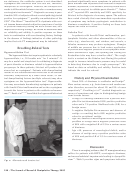 25
25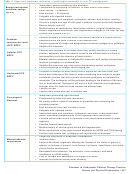 26
26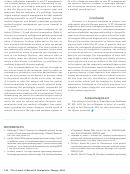 27
27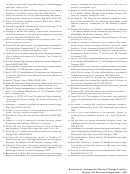 28
28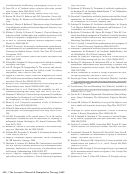 29
29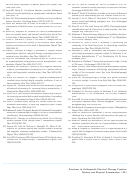 30
30








